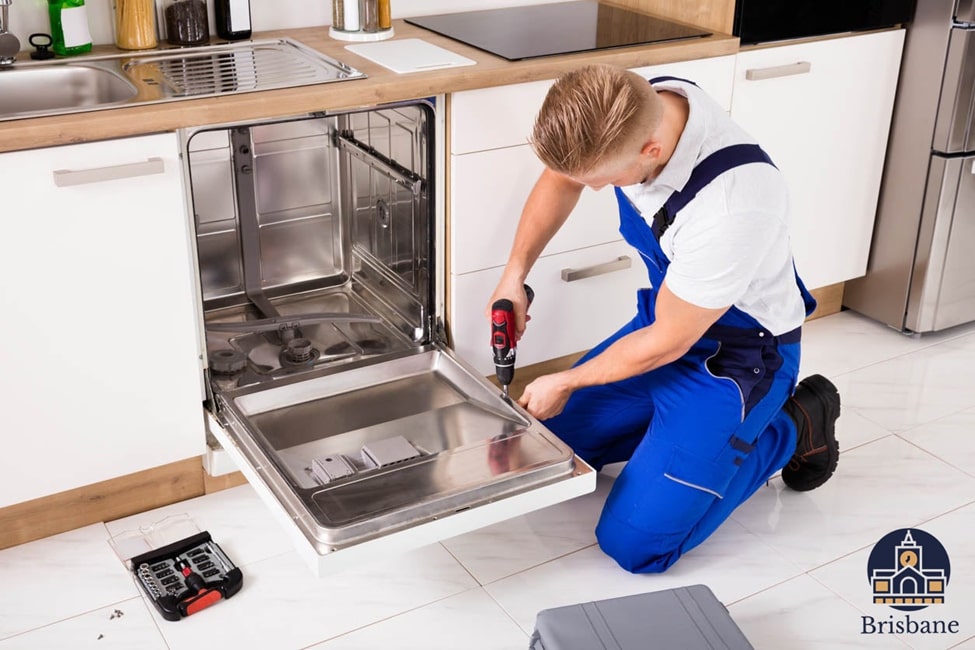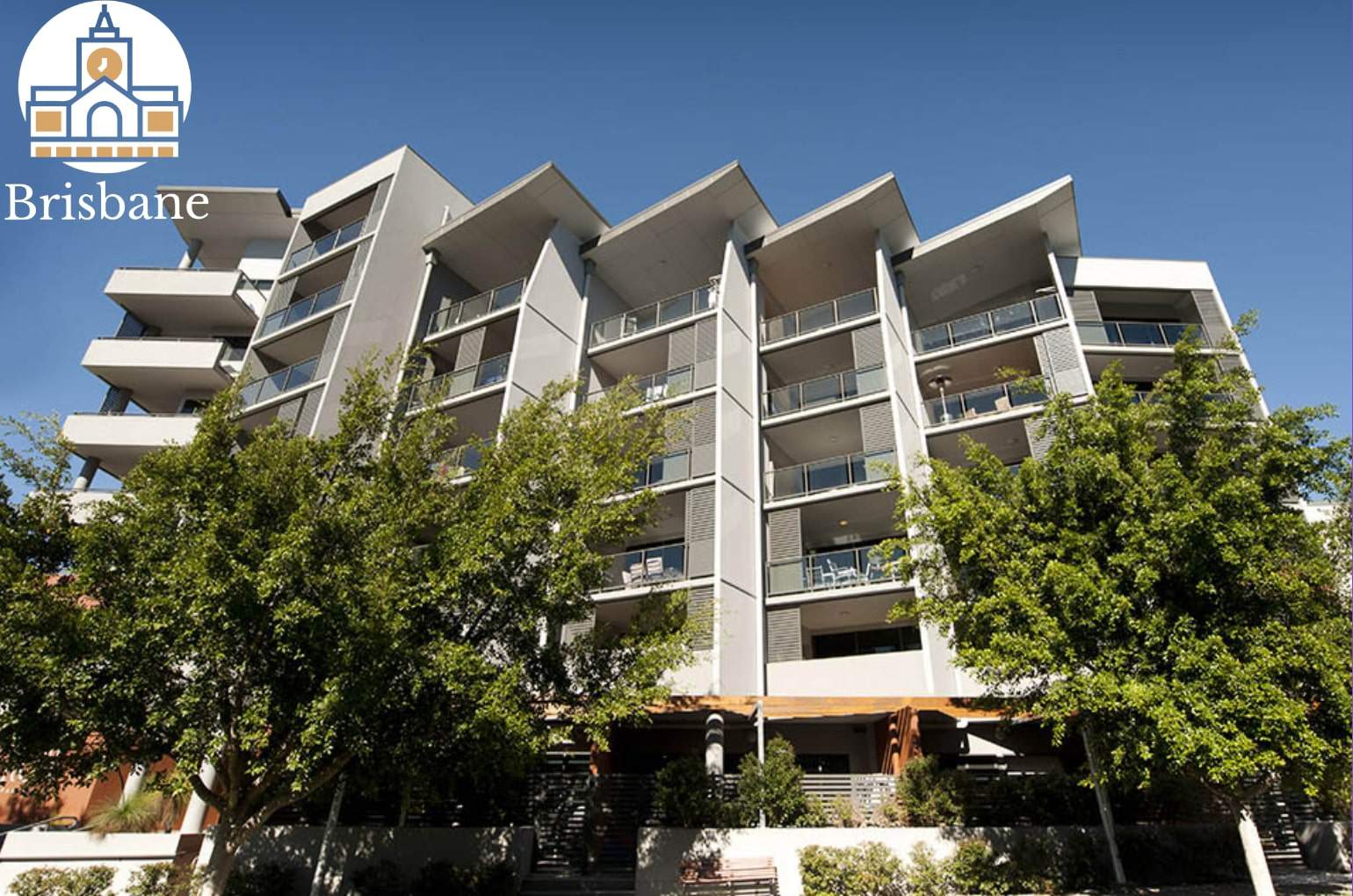Categories > Guides and Tips

Guide to Installing a Dishwasher in Brisbane
- Overview of the Different Dishwasher Parts
- Tools and Materials Needed
- Step-by-step Guide to Installing a Dishwasher
- Remove the Old Dishwasher (if you are replacing the old one)
- Turn Off the Power and Water Supply
- Disconnect the Water Supply Line
- Detach the Drain Hose
- Unscrew the Brackets
- Loosen the Dishwasher’s Legs
- Pull the Dishwasher Out of the Cabinet
- Take Off the Front Access Panel
- Attach the Electric Cord
- Install the Elbow Fitting Connector
- Hook Up the Water Supply Tube
- Connect the Drain Hose
- Move the Dishwasher into its Place
- Level the Dishwasher by Readjusting Its Legs
- Run a Full Cycle Test
- Put Back the Front Access Panel
- Anchor the Dishwasher through the Mounting Brackets
- Necessary Connections When Installing a Dishwasher
- Electrical Power Connection
- Water Supply Connection
- Drain Line Connection
- Main Types of Dishwashers
- Built-in Dishwashers
- Portable Dishwashers
- Drawer Dishwashers
- Dimensions of the Different Types of Dishwashers
- Price Range of the Different Types of Dishwashers
- Cost of Installation When You Hire a Professional in Brisbane
- Where to Buy Dishwashers in Brisbane
- Newtons Designer Appliances
- Brisbane Appliance Sales
- Brisbane Whitegoods Factory Outlet
- Brisbane Home Appliances
- Winning Appliances Fortitude Valley
Are you still washing dishes manually? If you are, maybe, it’s now time to consider a dishwasher.
Installing this machine may seem difficult and tedious given its large size, related plumbing and electrical fittings. But it’s a doable job that any DIYer can undertake.
Let’s get started on how to install a dishwasher in Brisbane with the following step-by-step guide.
Overview of the Different Dishwasher Parts

Tools and Materials Needed
Before you start, have the following tools and materials for this DIY project:
- 4-in-1 screwdriver
- Adjustable wrench
- Level
- Pliers
- Voltage tester
- Screwdriver and/or a driver drill
- Pipe Joint Compound
- Inlet and outlet hoses, dishwasher 90 connector, mounting hardware (came with the dishwasher unit)
- Cardboard (optional)
- Mop (Optional)
Step-by-step Guide to Installing a Dishwasher
Here’s everything you need to know on how to install a dishwasher. Follow this step-by-step guide.
1. Remove the Old Dishwasher (if you are replacing the old one)

If there’s a dishwasher previously installed, here are the steps on how to remove it before you install the new one. Having an assistant is highly recommended for this task as you are going to extract the appliance from the opening beneath the countertop.
1. Turn Off the Power and Water Supply
Take safety precautions first by turning off the dishwasher’s electricity at the circuit breaker or by simply unplugging the power cord. Then, turn off the water supply through the valve under the sink.
2. Disconnect the Water Supply Line
With a screwdriver, take off the front access panel which is located at the bottom of the dishwasher. Find that one metal nut that connects the water supply line and the dishwasher. Loosen and remove it by using a crescent wrench.
3. Detach the Drain Hose
Next, disconnect the drain hose at the garbage disposal or at an air gap fitting mounted to the sink or countertop. Using a screwdriver, loosen the screw on the hose clamp until it is fully detached. Put a rug under it or prepare a mop as some water may leak.
4. Unscrew the Brackets
Usually, a dishwasher is attached to the bottom of the countertop with metal mounting brackets. To find these brackets, open the dishwasher door and look under the lip of the kitchen counter. Remove the screws of the brackets.
5. Loosen the Dishwasher’s Legs
On the front access panel which was removed previously, you will see the legs of the dishwasher. You will need to loosen the legs to lower the dishwasher and create a space at the bottom of the countertop. Twist the threaded legs clockwise to loosen them.
6. Pull the Dishwasher Out of the Cabinet
With the aid of an assistant, carefully pull the dishwasher out of the cabinet. You may have to lift it a little bit to maneuver and clear the edge of the floor covering. You can also gradually slide some cardboard below the dishwasher to avoid scratching the floor.
2. Take Off the Front Access Panel

If this is a new installation, you can skip the previous step and proceed with this one. If there was no prior installed dishwasher on your cabinet, you might need to drill holes for the main connections such as the power cord, water supply, and drain hose.
Place the dishwasher near the gap where it will be installed and take off its front access panel. It’s just a matter of removing the screws.
3. Attach the Electric Cord

After removing the front access panel, locate and remove the cover of the wire connection housing. Then, identify the power cord connection fittings.
The first thing that you need to attach is the electric cord. Again, for safety measures, turn off the electricity beforehand at the circuit breaker as well as the water supply at the valve under the kitchen sink.
The dishwasher comes with a power cord that you need to thread into the housing. To connect the wires, just follow the same-color connection (e.g., green to green, white to white, and black to black).
Place back the cover of the wire connection housing. Then, thread the cord under your sink and plug it in.
4. Install the Elbow Fitting Connector

Along with the dishwasher unit is an elbow fitting connector called the dishwasher 90. Install this first to the water inlet fitting on the solenoid valve of the dishwasher. Apply some pipe joint compound to its threads and then tighten it with an adjustable wrench.
5. Hook Up the Water Supply Tube

Also included in your dishwasher unit is a braided steel water supply tube which you need to thread to the dishwasher 90 connector. Tighten it using an adjustable wrench but be careful not to over-tighten it, as you can possibly strip the threads.
6. Connect the Drain Hose

Attach the drain hose to the dishwasher while its other end either goes to the sink tail pipe or garbage disposal unit. In some installations, you may need to loop the hose up to create an air gap that prevents wastewater from siphoning back into the dishwasher.
7. Move the Dishwasher into its Place

Feed the cables and hoses through the cabinetry first so they don’t get caught under the dishwasher. Then, carefully push the dishwasher into the space under your counter. Turn it right side up and line it up to the center of the opening.
8. Level the Dishwasher by Readjusting Its Legs

To make sure that the dishwasher is level and stable, readjust its legs. You can use pliers to unscrew the legs and make your necessary adjustment.
9. Run a Full Cycle Test

It is important to test the dishwasher first through a full cycle before anchoring it into place. Turn on the power and water supply and check for leaks. Tighten any connections if necessary. If it turns on well, you got the electrical connections right.
10. Put Back the Front Access Panel

After knowing that the dishwasher is working properly, it’s now time to put back the front access panel on the bottom front of the dishwasher. Secure it with the provided screws.
11. Anchor the Dishwasher through the Mounting Brackets

Once you are satisfied with the positioning of the dishwasher, securely anchor it to the cabinetry through the mounting brackets. Use the provided screws to fasten these brackets to the underside of the cabinet and on the adjacent cabinets as well.
Necessary Connections When Installing a Dishwasher
It is important to know that installing a new dishwasher requires three essential connections: an electrical power connection, a water supply connection, and a drain line connection.
Electrical Power Connection
You have two options for the dishwasher electrical connections. You can either use a pigtail, which is basically a wire with a plug on the other end, or you can hard-wire, which connects the terminals permanently to the circuit wires in the wall.
Water Supply Connection
Here, you have a braided steel supply tube with one end on the water inlet valve of the dishwasher and the other end on the shut-off valve of the water supply pipe. With a special brass elbow fitting, you can easily connect the supply tube to the dishwasher.
Drain Line Connection
The drain line keeps away dirty wastewater from siphoning back into the dishwasher. A drain hose is connected to the drain trap under the sink which is either attached to an air-gap fitting or loops up to the underside of the countertop under the sink.
Main Types of Dishwashers
The three main types of dishwashers which are commonly found in households are the built-in, portable, and drawer type. Let’s look at each of these dishwasher types and see which one is best for you.
1. Built-in Dishwashers

Built-in dishwashers are considered the most popular and recognizable type of dishwasher. It is installed by sliding gently underneath the cabinets and has independent connections to plumbing.
One of the advantages of a built-in dishwasher is its quiet operation as it is surrounded by cabinets in the kitchen. With its proximity to where the food is being prepared, it’s also very convenient to use.
2. Portable Dishwashers

Portable dishwashers offer an alternative if you can’t install one under your cabinets. This is great for households with limited spaces as these are compact units that can be easily moved from one place to another. Just hook it up to the kitchen faucet to operate.
3. Drawer Dishwashers

This type of dishwasher is installed just like the built-in models. However, it offers more convenience with its two-level drawer compartments, making loading and unloading easier. You can either run the drawers simultaneously or separately.
Dimensions of the Different Types of Dishwashers
The various types of dishwashers come in different sizes. The following are the approximate dimensions of each type of dishwasher.
| Type of Dishwasher | Approximate Dimensions |
| Built-in Dishwasher | 59.7 × 59.8 × 83.5 cm |
| Portable Dishwasher | 46 x 66 x 99 cm to 61 x 76 x 94 cm |
| Drawer Dishwasher | 60 x 57.3 x 41 cm |
Price Range of the Different Types of Dishwashers
When looking for a dishwasher that works best for your kitchen, the type of dishwasher you will choose can influence the cost. Here are the price ranges of the different types of dishwashers in Brisbane.
| Type of Dishwasher | Price Range |
| Built-in Dishwasher | $899 – $2,899 |
| Portable Dishwasher | $399 – $1,990 |
| Drawer Dishwasher | $1,338 – $2,799 |
Cost of Installation When You Hire a Professional in Brisbane

In Brisbane, the cost of dishwasher installation may range from $149 for a standard dishwasher to $176 for a fully or semi-integrated one. Generally, plumbers charge on a per-hour basis between $100 and $150 per hour plus a call-out rate of $60 to $100.
On the other hand, if it’s a new installation without existing plumbing and electrical connections, you will need the help of other professional services. The following services need to be considered in the total installation cost:
• Plumber for new pipe installation – $500–$1500
• Electrician for new power point installation – $140–$180
• Cabinet maker for some cabinetry modification – $50–$75 per hour
Where to Buy Dishwashers in Brisbane
The following are some shops where you can buy dishwashers in Brisbane. Check out the details of each.
1. Newtons Designer Appliances

Newtons Home Appliances has already been over 80 years operating in Queensland, providing a wide range of appliance brands. You can try their products before you buy and consult their staff for your best appliance needs.
| WEBSITE: | https://newtonshomeappliances.com.au/ |
| ADDRESS: | 445 Logan Rd, Greenslopes QLD 4120, Australia |
| CONTACT INFO: | +61 7 3397 1161 |
| OPERATING HOURS: | Monday – Friday: 9AM-5PM; Saturday: 9AM-3PM |
2. Brisbane Appliance Sales

Brisbane Appliance Sales is a family-owned and operated business in the appliance industry. From fully integrated products that can be hidden in cabinets to bold stainless steel appliances that can be a focal point, they have everything you need.
| WEBSITE: | https://www.brisbaneappliance.com/ |
| ADDRESS: | 171 Enoggera Rd, Newmarket QLD 4051, Australia |
| CONTACT INFO: | +61 7 3356 8088 |
| OPERATING HOURS: | Monday – Friday: 9AM-5:30PM; Saturday: 9AM-4PM; Sunday: 10AM-4PM |
3. Brisbane Whitegoods Factory Outlet

Brisbane Whitegoods Factory Outlet offers a vast range of stocks at discounted prices. Whether you are building a new house or renovating, they surely have appliances to match your needs at a bargain price.
| WEBSITE: | https://brisbanewhitegoods.com.au/ |
| ADDRESS: | 47 Pickering St, Enoggera QLD 4051, Australia |
| CONTACT INFO: | +61 7 3355 6855 |
| OPERATING HOURS: | Monday – Friday: 8:30AM-5:30PM; Saturday & Sunday: 9AM-2PM |
4. Brisbane Home Appliances

Brisbane Home Appliances is a family-owned store selling brand-new and factory-second products, from freezers to dishwashers. You can also shop online as they offer delivery and their staff are able to install washing machines and dishwashers.
| WEBSITE: | https://www.brisbanehomeappliances.com.au/ |
| ADDRESS: | 4/466 Newman Rd, Geebung QLD 4034, Australia |
| CONTACT INFO: | +61 1300 339 393, [email protected] |
| OPERATING HOURS: | Monday – Sunday: 9AM-4:30PM |
5. Winning Appliances Fortitude Valley

Winning Appliances Fortitude Valley specializes in kitchen and laundry appliances from the world’s finest brands. Before buying, you can ask advice from their product experts to meet your household’s unique needs.
| WEBSITE: | https://www.winnings.com.au/stores/qld-fortitude-valley |
| ADDRESS: | 167 Alfred St, Fortitude Valley QLD 4006, Australia |
| CONTACT INFO: | +61 7 3852 0000, [email protected] |
| OPERATING HOURS: | Monday – Saturday: 9AM-5PM; Sunday: 10AM-4PM |
Installing a dishwasher can be a daunting task with a number of steps to take with varying degrees of difficulty. However, if you’re in for the challenge of doing it by yourself, you can save a significant amount of money.
By following the right steps, dishwasher installation in Brisbane is well within the reach of most homeowners. With the money that you’ll save by not hiring a professional, you can rather spend it on a high-quality dishwasher that will serve you for several years.





